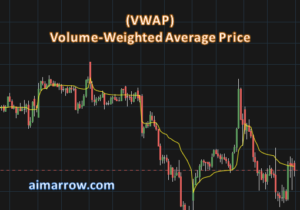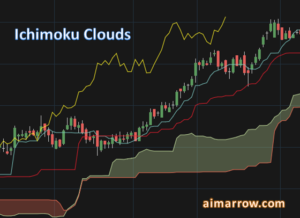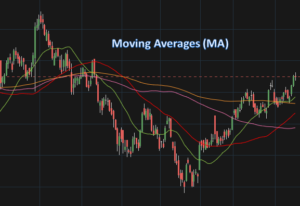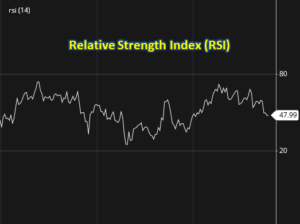Price Earnings Ratio (P/E Ratio)
Price Earnings ratio (P/E ratio) or Price to Earnings ratio is also called as the Price Multiple or the Earnings Multiple. The P/E ratio is perhaps the most popular financial ratio. Because of the popularity the P/E ratio enjoys, it is often considered the ‘financial ratio superstar’.
What is Price Earnings ratio or PE ratio?
Price Earnings ratio (P/E ratio) is the ratio of company’s current share price to its earnings per share (EPS).
It indicates how much the stock is valued in the market, thereby helps investors analyze how much they should pay for a stock based on its current earnings. Therefore, the Price-to-Earnings ratio or P/E ratio is one of the most widely used stock analysis tools used by investors and analysts.
Moreover, if the growth and level of earnings of the company remain constant, then the P/E can be interpreted as the number of years it will take for the company to pay back the amount paid for the share.
Formula to calculate P/E Ratio:
EPS measures the profitability of a company on a per share basis. Higher EPS is better for its shareholders.
Example of EPS:
Assume a certain company with 100 shares outstanding, generates a profit of Rs. 100000. Then the earnings on a per share basis would be:
EPS = 100000 / 100 = Rs. 1000 per share.
Now, let us look at an example on how to calculate Price to Earnings (P/E) ratio of a company!
P/E Ratio Example:
The current market price (at the time of writing this article) of Infosys stock is Rs. 775 and it’s earning per share is Rs 33.75. The Price Earning Ratio of Infy will be calculated as follows:
P/E = 775 / 33.75 = 22.96
Now, the P/E ratio of Infosys is 22.96, which means that investors are willing to pay Rs. 22.96 to acquire the share for every rupee of profit Infy earns. Higher the P/E, more expensive is the stock.
– Analysts and investors review a company’s P/E ratio to determine if the share price accurately represents the projected earnings per share.
In addition to showing whether a company’s stock price is overvalued or undervalued, the P/E can reveal how a stock’s valuation compares to its industry group or a benchmark like the Nifty50 Index.
How Does the Price to Earnings Ratio Work?
Earnings are important when valuing a company’s stock because investors want to know how profitable a company is and how valuable it will be in the future. Investors often look at this ratio as it gives a good sense of the value of the company.
What Does PE Ratio Tell About a Stock (or) How to Interpret PE Ratio?
a. High P/E
Companies with high P/E are often considered to be growth stocks or that the investors are expecting high growth in the future and are willing to pay more per share as it indicates a positive future performance.
In other words, high PE ratio suggests that market participants are bullish on the stock and expect the company to post higher earnings growth going forward. However, it can also be interpreted as an overpriced/over-valued stock in some cases.
b. Low P/E
Companies with low P/E are often considered to be undervalued stocks or that the market participants are not too bullish on the company’s future earnings growth. This means that the price of such stocks will be relatively less.
Low P/E ratio is usually an indication of a weak current and potentially weak future performance of a company. This could prove to be a poor investment. However, this lower pricing of stock attracts investors to buy such stocks. If the performance of the company improves then the investor will make profits.
c. Companies that have no earnings or that are posting losses do not have a P/E ratio since there is nothing to put in the EPS. In both the cases P/E will be expressed as “N/A”. Though it is possible to calculate a negative P/E, this is not the common convention.
– The above may not always hold true as the PE ratio varies from industry to industry. Traditionally there are certain sectors like diamonds, fertilizers or very cyclical sectors that command a low PE ratio, while sectors like FMCG, Pharma and IT normally have a higher PE.
So, the PE ratio of a company should either be compared with its peers having parallel business activity and of similar size or with its historical PE to evaluate whether a stock is undervalued or overvalued.
P/E ratio is also dependent on external factors; a merger and acquisition announced by a company will increase the P/E ratio. Therefore, it is important to analyze various other aspects of a company before investing.
Versions/Variations of Price to Earnings Ratio:
There are multiple versions of the P/E ratio, depending on whether earnings are projected or realized, and the type of earnings. There are two types of EPS metrics that factor into the most common types of P/E ratios:
Trailing P/E:
This is the most common meaning of “P/E” if no other qualifier is specified. It is listed in the fundamentals section of most finance sites with the notation “P/E (TTM)”, where “TTM” is a Wall Street acronym for “trailing 12 months ”. This number signals the company’s performance over the past 12 months.
It is calculated by dividing the current share price by the total EPS earnings over the past 12 months.
Problems of Using Trailing PE:
– A company’s past performance doesn’t signal future behavior.
– The fact that the EPS number remains constant, while the stock prices fluctuate, is also a problem. If a major company event drives the stock price significantly higher or lower, the trailing P/E will be less reflective of those changes.
– The trailing P/E ratio will change as stock’s price moves, since earnings are only released each quarter while stocks trade day in and day out.
Forward P/E:
This earning metric is found in a company’s earnings release, which often provides EPS guidance. The forward (or leading) P/E uses future earnings guidance rather than the trailing numbers. This is the company’s best-educated guess of what it expects to earn in the future. Sometimes it is also called “estimated price to earnings”.
It is useful for comparing current earnings to future earnings and helps provide a clearer picture of what earnings will look like – without changes and other accounting adjustments.
Problems of Using Forward PE:
– Companies could underestimate earnings in order to beat the estimate P/E when the next quarter’s earnings are announced.
– Companies may overstate the estimate and later adjust it going into their next earnings announcement.
– External analysts may also provide estimates, which may diverge from the company estimates, creating confusion.
If the forward P/E ratio is lower than the trailing P/E ratio, it means market participants are expecting earnings to increase; if the forward P/E is higher than the current P/E ratio, then they’re expecting earnings to decrease.
A third and less common variation uses the sum of the last two actual quarters and the estimates of the next two quarters.
Other Problems Involved with Price Earning Ratio:
Even though the P/E ratio is a useful tool to valuate a stock, you cannot rely on it alone. You need to use it with other valuation techniques to arrive at a more accurate picture. The P/E ratio is affected by the following parameters:
a. The calculation of P/E Ratio accounts only for the earnings and market price of an equity share. It doesn’t look into the debt aspect of the company. There are companies which are highly-leveraged and can be considered as risky investments. However, a high P/E Ratio of such companies will not bring forth this aspect.
b. P/E ratio assumes that the earnings will remain constant in the near future. However, earnings are dependent on a lot of other things and can also be manipulated. Provision for lesser depreciation can boost earnings.
c. Ideally, an investor needs to invest in a company which keeps generating cash flows throughout its life-cycle, at an increasing rate. If the company’s earnings are increasing but not its cash flows and sales, then clearly something is not right. P/E ratio doesn’t indicate whether a company’s cash flow is going to increase or decrease in the years to come. Hence, it leaves room for ambiguity as regards the direction of growth.




